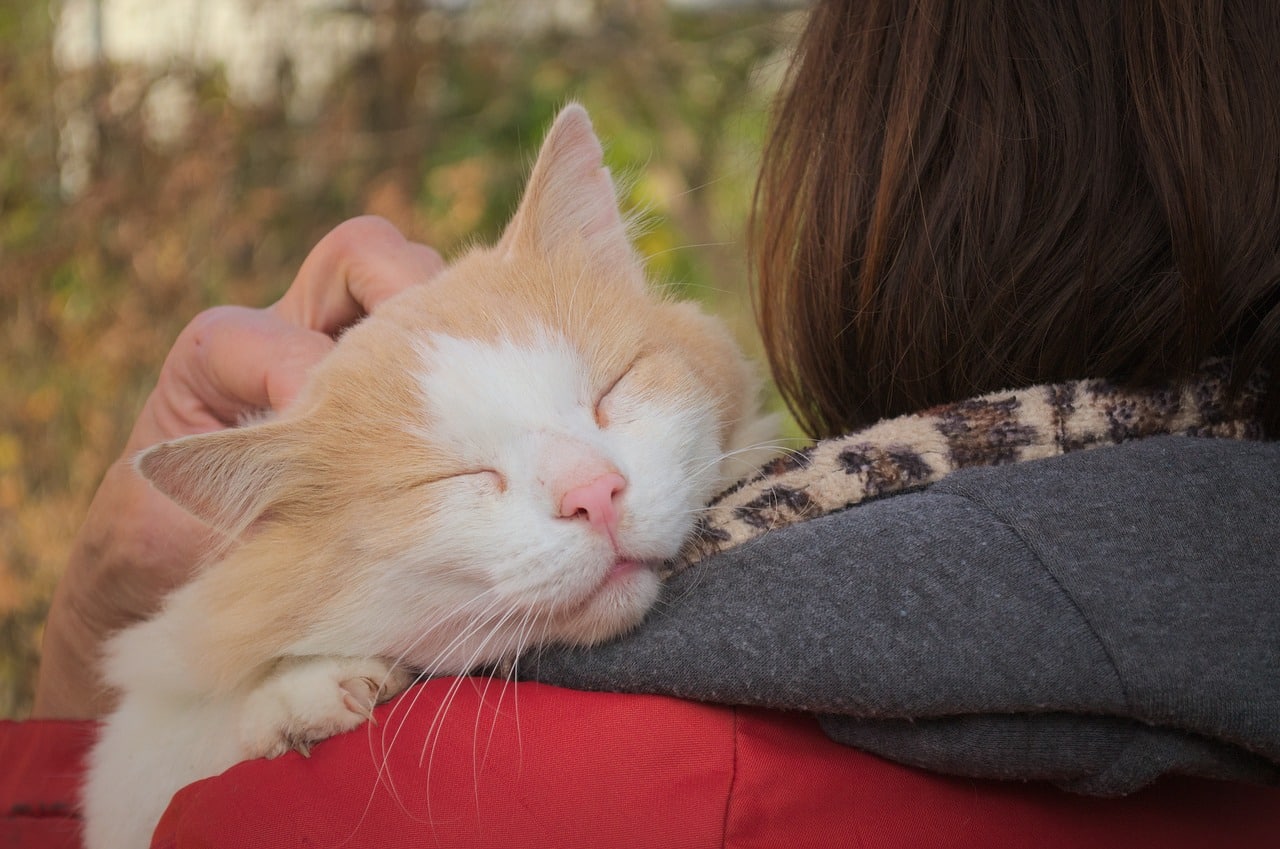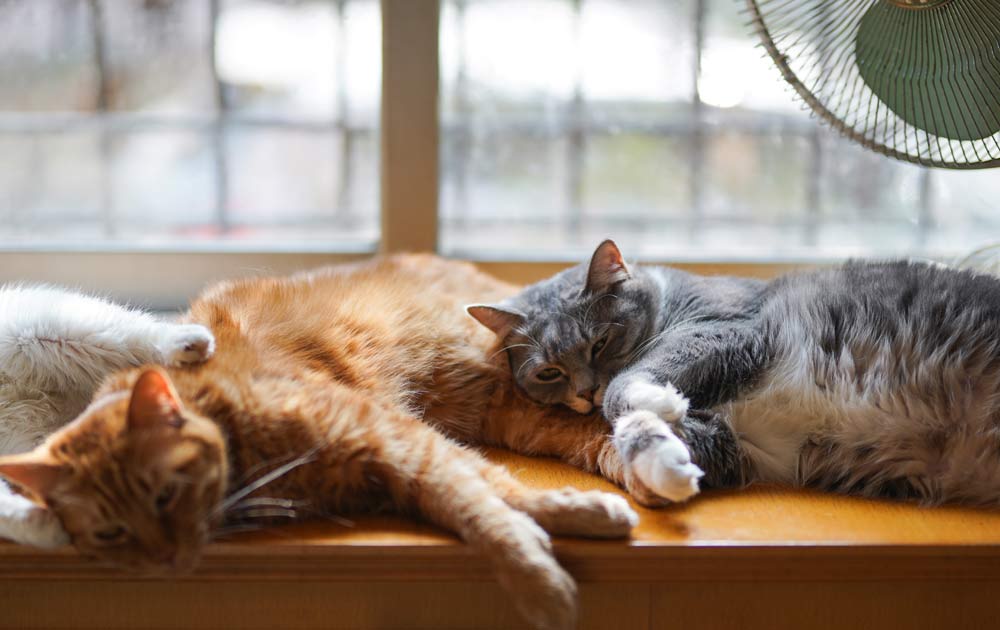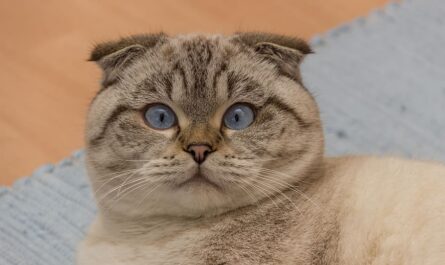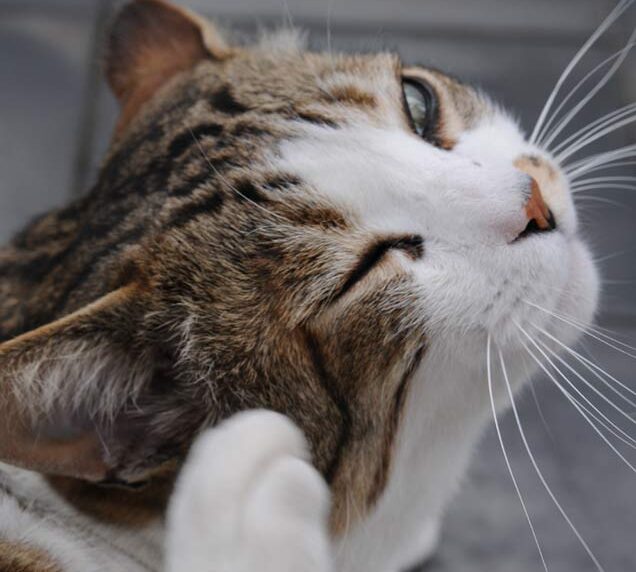Why Does My Cat Always Want To Cuddle? You’re engrossed in a captivating novel, a mug of your favorite tea steaming beside you, creating a perfect moment of tranquility. Suddenly, a furry weight settles squarely on your lap, demanding immediate attention with a rumbling purr. Your meticulously crafted moment of peace has morphed into a cuddle session with your feline overlord.
Cats, often stereotyped as independent and aloof creatures, can surprise us with their unexpected displays of affection. Those soft paws kneading your lap, the gentle head bunting against your hand, the rhythmic purr vibrating contentedly – these all paint a picture of a cat deeply content in your company. But what exactly compels our feline companions to seek such close physical contact? This article delves into the fascinating world of feline affection, exploring the biological and behavioral reasons behind your cat’s cuddles. We’ll decipher different cuddling styles and their potential meanings, address medical reasons for increased neediness, and offer tips for managing cuddle time when it becomes a bit too enthusiastic. So, grab your favorite catnip-infused toy (because playtime is essential too!), and let’s unravel the mysteries behind your cat’s cuddles.
The Language of Love: Decoding the Purrs and Snuggles
Ever curl up on the couch with your feline friend, only to be met with a flurry of purrs and a determined head-butt, nudging you into a cuddle session? For some cat owners, this constant cuddling might be a source of amusement, while others might crave a bit more personal space. But what exactly is driving this feline desire for closeness? This section delves into the biological and behavioral reasons behind your cat’s urge to cuddle, helping you decipher the sweet symphony of purrs and snuggles.
Whispers of the Past: Evolutionary Echoes in Cuddling
Cuddling might seem like a purely affectionate behavior, but it actually has roots in our feline companions’ wild ancestry. Kittens huddle together with their mothers for warmth and comfort, a vital behavior for survival in the early stages of life. This instinct to seek physical closeness can carry over into adulthood, with your cat viewing you as a source of safety and security. So next time your cat curls up on your lap, it might be an echo of their kittenhood, seeking the warmth and comfort they received from their mother.
A Safe Harbor: Finding Security in Your Embrace
Cats, despite their independent nature, can be surprisingly sensitive creatures. New environments, loud noises, or even changes in your routine can trigger feelings of anxiety in your feline friend. During these times, cuddling with you becomes a haven, a familiar and comforting presence that provides a sense of security. Imagine your lap as a safe harbor during a storm, offering your cat a place to feel protected and at ease.
The Power of Touch: A Language of Love and Belonging
Cats are not always vocal creatures, but they have a unique way of expressing affection – through touch! A gentle head-butt, a slow blink, and of course, cuddling, are all ways your cat communicates their love and devotion. When your cat chooses to snuggle close, it’s their way of saying, “You’re my human, and I feel safe and happy being near you.” Consider cuddling as a feline language of love, a way for them to express their bond with their favorite human companion.
The Science of Purrs: The Symphony of Relaxation and Bonding
One of the most endearing aspects of a cuddle session is the rhythmic purr of your contented cat. But did you know that purring isn’t just a sign of happiness? Studies suggest that purring not only promotes feelings of relaxation and contentment in your cat but might also have a calming effect on you! The low-frequency vibrations of a purr can potentially lower blood pressure and promote feelings of well-being in humans. So, a cuddle session with your purring cat might be a win-win situation, promoting relaxation and strengthening the bond between you both.
The Language of Love: Decoding Your Cat’s Cuddling Style
Cats, often stereotyped as independent creatures, can surprise us with their unwavering affection. Those rumbling purrs and gentle head nudges leave no doubt about their capacity to love and bond with their humans. Cuddling is a fundamental way cats express their fondness, and understanding their unique cuddling styles can deepen the connection between you and your feline friend.
The Lap Cat: A Purrfect Match for Relaxation
Ah, the lap cat – the quintessential cuddle companion. This feline friend gravitates towards your lap the moment you settle down on the couch, their soft fur a comforting weight as they curl up and purr contentedly. Lap cats often seek cuddles during relaxation time, synchronizing their moments of rest with yours. Imagine curling up with a good book, a mug of tea, and your cat nestled contentedly on your lap – a purrfect recipe for unwinding after a long day.
Decoding the Message: Your lap cat is declaring, “You are my safe haven, my person. There’s no place I’d rather be than right here, basking in your warmth and company.”
The Shadow: A Love That Follows You Around
Some cats, while not always seeking direct physical contact, express their affection by following you around the house like a furry shadow. They might weave between your legs as you walk, perch on the edge of the bathtub while you take a shower, or simply be present in whatever room you occupy. This constant companionship, though not a traditional cuddle, demonstrates their desire to be near you and stay connected.
Decoding the Message: Your shadow cat’s message is clear: “I may not always want to be held, but I don’t want you out of sight! Knowing you’re close by brings me comfort.”
The Kneader: A Throwback to Kittenhood
Have you ever witnessed your cat rhythmically kneading your lap or a soft blanket with their paws? This endearing behavior, often accompanied by blissful purring, might bring back memories of them nursing from their mother as kittens. Kneading is a self-soothing reflex carried over from kittenhood, and when directed at you, it signifies a place of comfort and trust.
Decoding the Message: Your kneading cat is essentially saying, “You make me feel safe and secure, just like when I was a tiny kitten with my mama.” Consider it a feline compliment, a way of expressing their deep affection and contentment in your presence.
The Nighttime Nuzzler: Cozy Companions for the Night Owl
Some cats are night owls, and their cuddling tendencies emerge after the lights dim and bedtime approaches. These nighttime nuzzlers might curl up beside you on the bed, burrow under the covers, or drape themselves contentedly across your legs. Their nighttime cuddles offer warmth, a sense of security, and a way to strengthen the bond during those quiet, close moments.
Decoding the Message: Your nighttime nuzzler whispers, “Sweet dreams, human! Let’s snuggle up together and drift off to a peaceful sleep.” This behavior reflects their trust in you and their desire for closeness throughout the night.
Decoding Cuddles: When Affection Turns to Neediness
Our feline companions are masters of expressing themselves, and their love for cuddling can be a source of immense joy. However, there are times when a cat’s desire for closeness can become seemingly constant, leaving you wondering if something has changed. This section explores some reasons behind a cat’s increased need for cuddles and when it might be wise to consult your veterinarian.
Silver Spoons and Snuggles: Understanding Senior Cat Cuddles
As cats age, their needs and personalities can evolve. A once independent feline might now crave more cuddling and companionship. Here are some possible explanations for this shift:
- Decreased Independence: Senior cats may experience a decline in their senses, making them feel less confident or secure in their environment. Cuddling with their trusted human can provide a sense of comfort and familiarity.
- Seeking Solace from Aches and Pains: Just like us, senior cats can experience aches and pains associated with aging. Cuddling close to their human can offer warmth and a sense of security, helping them manage any discomfort.
- Spoiling Them Rotten (With Love!): Let’s face it, sometimes we shower our senior kitties with extra love and attention as they age. This can inadvertently reinforce their cuddly behavior, creating a positive feedback loop – the more they cuddle, the more love and attention they receive.
Remember: While increased cuddling in senior cats can be a natural sign of affection and a desire for comfort, it’s always a good idea to schedule regular checkups with your veterinarian to rule out any underlying medical conditions.
More Than Just Cuddles? Exploring Medical Causes of Increased Neediness
While cuddling is a beautiful expression of love, sometimes a cat’s clingy behavior can be a sign of an underlying medical issue. Here are some conditions to consider:
- Hyperthyroidism: This hormonal imbalance can cause increased anxiety and a heightened need for attention in cats. Other symptoms may include weight loss, increased appetite, and excessive thirst.
- Anxiety: Cats can experience anxiety for various reasons, including changes in routine, new pets in the household, or loud noises. An anxious cat might seek solace and comfort through constant cuddling.
- Pain: If your cat is experiencing pain from an injury, illness, or arthritis, they might cuddle more as a way to seek comfort and reassurance.
Remember: If your once independent cat exhibits a sudden and significant increase in neediness, particularly accompanied by other concerning symptoms, consult your veterinarian for a checkup. Early detection and treatment of any underlying medical conditions can significantly improve your cat’s well-being.
When to Worry: Sudden Shifts in Cuddling Behavior
Cats are creatures of habit, and changes in their cuddling behavior can sometimes be a red flag. Here’s when you might want to seek professional guidance:
- Dramatic Increase in Clinginess: A previously independent cat that suddenly becomes extremely clingy and requires constant cuddling warrants a trip to the vet. This could indicate a medical condition causing them anxiety or discomfort.
- Cuddles Accompanied by Other Symptoms: If increased cuddling is accompanied by changes in appetite, litter box habits, lethargy, or vocalizations, it’s best to err on the side of caution and consult your veterinarian.
- Loss of Interest in Cuddling: While increased neediness can be a cause for concern, a cat that used to enjoy cuddling and suddenly withdraws might also be experiencing health issues or emotional distress.
Remember: You know your cat best. Trust your gut instinct, and if you feel something is amiss with their cuddling behavior or overall health, a visit to your veterinarian can provide peace of mind and ensure your feline friend receives the care they need.

The Cozy Companion: Understanding Your Cat’s Cuddle Cravings (and Setting Gentle Boundaries)
Ah, the blissful purr, the rhythmic kneading of paws – there’s something undeniably heartwarming about a cat curling up on your lap for a cuddle session. But what happens when your feline friend turns into a cuddle monster, and their need for closeness becomes a bit overwhelming? Fear not, cat owners! This section explores the reasons behind your cat’s snuggly tendencies and offers solutions for navigating those moments when you crave a little more personal space.
Decoding the Purrfect Embrace: Why Does My Cat Love to Cuddle?
Cats are often stereotyped as aloof creatures, but many feline companions surprise us with their affection. Here are some reasons why your cat might be a cuddle connoisseur:
- Warmth Seekers: Cats are wired to seek out warmth, and your body temperature provides the perfect haven. Especially on chilly days, your lap becomes a cozy refuge for your cat to snuggle up and conserve energy.
- Safety and Security: From a historical perspective, cats formed bonds with humans for mutual benefit. Cuddling can provide your cat with a sense of safety and security, strengthening the trusting relationship they share with you.
- Communication and Bonding: Just like purring, cuddling can be a way for your cat to communicate affection and strengthen the social bond between you. Kneading, a behavior often associated with nursing kittens, can be a sign of contentment and trust.
Remember: Not all cats are cuddle enthusiasts. Some felines prefer a more independent relationship and may not be interested in lengthy cuddle sessions. Respecting your cat’s individual personality is key to a harmonious relationship.
Setting Boundaries with Love: Creating Space While Maintaining Affection
Even the biggest cat lovers need some personal space now and then. Here are some ways to establish gentle boundaries while still showering your cat with affection:
- Let Your Cat Initiate: Instead of forcing cuddles on your cat, allow them to come to you on their own terms. This empowers them and strengthens the positive association they have with cuddling.
- The Designated Cat Bed: Create a cozy and inviting cat bed and place it near you when you’re relaxing on the couch or reading. This provides your cat with a comfortable alternative when you need some space.
- Respecting Rest and Relaxation: Cats alternate between periods of activity and sleep. If your cat is curled up and napping, resist the urge to pet or cuddle them. Allow them their well-deserved rest and approach them for cuddles when they’re alert and interactive.
Remember: Punishment is never the answer! Focus on positive reinforcement and redirection. When you need some space, gently guide your cat to their designated bed and offer a treat or praise them for using it.
Redistributing Affection: Showering Your Cat with Love in Other Ways
While some cats crave physical affection, others may be more content with alternative ways to show you care. Here are some ideas to keep your cat feeling loved and engaged:
- Playtime is Purrfect Time: Schedule regular playtime sessions with your cat. Interactive toys like feather wands or laser pointers mimic hunting behaviors and provide a healthy outlet for your cat’s natural instincts.
- Grooming Sessions: Grooming your cat not only removes loose fur but also strengthens the bond between you. Use a soft brush and gentle strokes, making the experience positive and relaxing for your cat.
- Treat Dispensing Toys: Puzzle feeders and treat-dispensing toys provide mental stimulation and keep your cat entertained while rewarding them for problem-solving skills.
Remember: A variety of affection-giving methods caters to your cat’s individual preferences. Experiment and find what makes your feline friend feel most loved and secure.
Environmental Enrichment: Combating Boredom and Creating a Stimulating Space
Sometimes, excessive cuddling can stem from boredom or anxiety. Providing environmental enrichment keeps your cat mentally stimulated and reduces the need for constant attention:
- Vertical Space is Key: Cats are naturally curious and love to climb. Invest in a cat tree or wall shelves to provide vertical spaces for them to perch, explore, and survey their surroundings.
- Rotate the Toys: Cats can get bored with the same toys over time. Keep things interesting by rotating a selection of toys regularly. You can even create homemade toys using cardboard boxes or paper bags, which can spark your cat’s curiosity.
- Window Wonderland: Cats are fascinated by the world outside. Provide a window perch or scratching post near a window to allow them to observe birds, squirrels, and other outdoor activities.
The Purrfect Partnership: Unraveling the Mystery of Your Cat’s Cuddles
Does your feline friend turn into a cuddle monster the moment you settle down on the couch? Or perhaps they greet you with a head nudge and a rumbling purr, insisting on a pre-breakfast snuggle session? Cats, those enigmatic creatures, can leave us wondering why they crave our company at times, yet fiercely protect their personal space at others. This section explores the reasons behind your cat’s cuddly tendencies and offers tips for fostering a harmonious relationship that respects both your needs and your cat’s unique personality.
Decoding Your Cat’s Cuddle Cravings: A Celebration of Individuality
Cats, much like us humans, are individuals. Some felines are naturally more affectionate, reveling in physical touch and seeking out lap time. Others may be more independent, preferring occasional chin scratches or a brush against your leg. The key to understanding your cat’s cuddle cravings lies in appreciating their unique personality and respecting their comfort level. Here are some things to consider:
- Breed Predisposition: Certain cat breeds, such as Ragdolls, Persians, and Burmese, are renowned for their affectionate nature and love of cuddling. If you have a breed known for its cuddly tendencies, chances are your lap will become a prime napping spot!
- Age Matters: Kittens often have boundless energy and may not be as interested in cuddling compared to adult cats. Senior cats, on the other hand, sometimes become more cuddly as they seek warmth and companionship.
- Life Experiences: A cat’s upbringing and past experiences can influence their affection levels. Cats raised in loving homes with plenty of human interaction are more likely to crave cuddles. Business – Money Making – Marketing – E-commerce
Remember: Never force your cat to cuddle. Pay attention to their body language. A swishing tail, flattened ears, or dilated pupils might indicate they’re feeling overwhelmed and need some space.
Routine Purrs: Establishing Predictability and Comfort
Cats thrive on routine. Knowing what to expect throughout the day provides them with a sense of security and can actually enhance their desire to cuddle. Consider incorporating these elements into your daily life:
- Schedule Some Snuggle Time: Set aside specific times for cuddling, whether it’s a morning petting session or an evening Netflix and purr session. This predictability allows your cat to anticipate and potentially look forward to these moments of closeness.
- Respect Their Boundaries: Pay attention to your cat’s cues. If they nudge your hand for attention but then retreat after a few strokes, respect their boundaries. You can always initiate another cuddle session later when they seem more receptive.
- Create a Cat-Centric Space: Designate a cozy area for your cat, like a comfy bed or a perch near a window. This provides them with a safe haven to retreat to when they crave solitude.
Remember: A predictable routine and a designated space for your cat contribute to a sense of overall well-being, which can indirectly influence their desire to cuddle and bond with you.
The Joy of Feline Companionship: A Celebration of Unique Love Languages
Cats may not shower us with kisses or wag their tails with excitement, but their love is undeniable, expressed in their own special ways. A slow blink, a gentle head nudge, or the rhythmic rumble of a purr – these are all signs of feline affection. Cat accessories on Amazon
Learning to appreciate your cat’s unique way of showing love can deepen your bond. Embrace the purrs, the head boops, and the moments they choose to grace your lap with their presence. These quiet expressions can be just as meaningful as a slobbery canine kiss.
Remember: Building a strong bond with your cat takes time, patience, and mutual respect. By understanding their individuality, creating a predictable routine, and appreciating their unique way of showing affection, you can cultivate a purrfect partnership that brings joy to both you and your feline companion.
Other Interesting Articles
- Cat Flu: Symptoms, Medicine, Treatment, Text Kit, Prevention
- Cat Herpesvirus 1 (FHV-1): Causes, Symptoms, Treatment
- Do Cats Enjoy Mating? A Guide To Feline Sexual Behavior
- Benefits of a High-Protein Diet for Your Cat: A Complete Guide
- How Many Kittens Can A Cat Give Birth To: When To Worry
- Why is My Cat Drinking Much Water All of A Sudden? To-Dos
- Cat Dystocia (Difficult Birth): Causes, Symptoms, Treatment
- 23 Signs That Indicate Something is Wrong with Your Cat
- Cat Eyes Signs: 15 Things Your Cat Is Saying With Its Eyes
- How Cat Eyes Work: How to Care for Your Feline’s Eyes
- Why Does My Cat Sit On My Shoulder? Reasons, To-Dos
- Why is My Cat So Clingy? Behavior, Reasons, Solutions
- Cat Vomiting: Types, Causes, Symptoms, Treatments, Cure
- Feline Estrous Cycle: What To Expect When A Cat Is in Heat
- Weight Gain in Cats: Obesity Signs, Causes & What to Do
- 13 Ways to Tell if A Cat is Pregnant: Signs, Behavior, Guide
- Cat Pregnancy: Signs, Nipples, Behavior, Care, What To Do
- Nesting Behavior in Cats: Signs, Reasons, What To Do
- How To Help Your Cat Put Their Best Paw Forward: 12 Steps
- How To Improve Your Cat’s Behavior in 14 Systematic Steps


